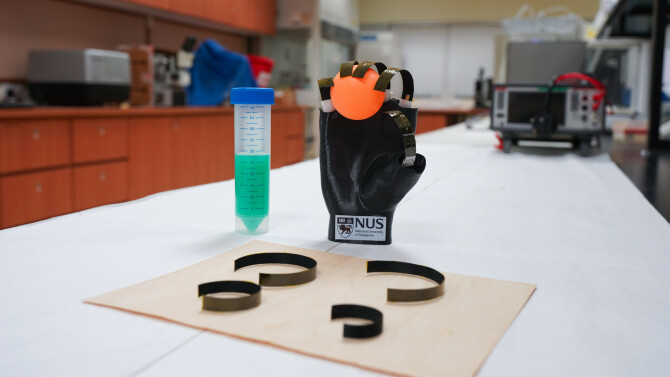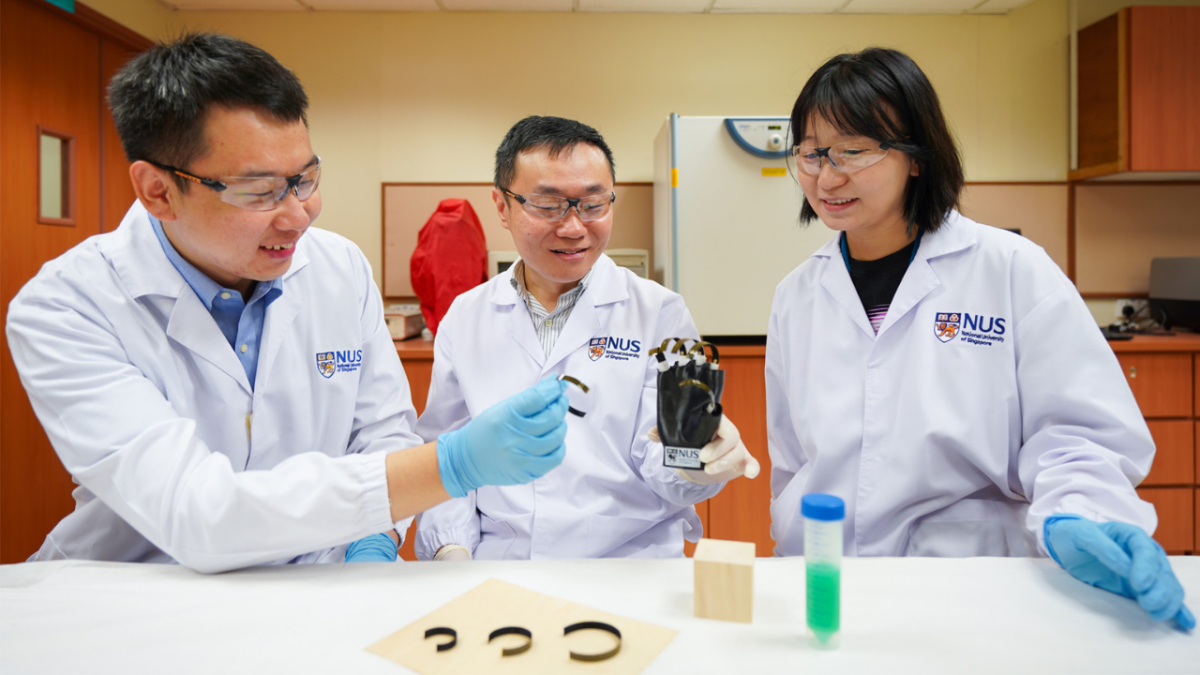[ad_1]
Left to right: Proffesor Tan Swee Ching, Qu Hao, and Bai Lulu with the wooden gripper.
Credit: NUS
We’ve used slime, liquid metal, and even bugs to create robots—why not try wood, too? Researchers at the National University of Singapore and China’s Northeast Forest University have teamed up to create a robotic gripper driven by changes in its surroundings, like moisture and temperature fluctuations. They believe the prototype could pave the way for robots that work in a wide range of temperatures and don’t require significant power resources.
At first glance, wood appears too brittle, rigid, or splintery to be used for a robotic gripper. But the researchers were able to manipulate Canadian maple wood into something just flexible enough to actuate effectively. They started with sheets of wood just 0.5 millimeters thin, then treated them with sodium chloride to remove their lignin, an organic polymer that lends wood its rigidity. The researchers then filled the resulting pores with a conducting polymer called polypyrrole to help the wood absorb heat and light more easily.
One side of each sheet was coated with a custom-formulated nickel hygroscopic gel, while the other side was pressed with a hydrophobic film. This allowed the wood to absorb water vapors on just one side, making it easier to change shape in humid conditions. After that, the researchers heated the wood to 70 degrees Celsius (158 degrees Fahrenheit) and molded it into “fingers,” which were then attached to a robotic hand.

Credit: NUS
When the wooden gripper was placed in an environment with 95% relative humidity (RH), the hygroscopic gel on one side absorbed moisture from its surroundings, causing the hand’s fingers to open gradually. When it was exposed to 200-degree heat (392 Fahrenheit), the hand closed. This was the gripper’s point of maximum bendability. At 170 degrees Celsius (338 Fahrenheit), the gripper could lift a 200-gram weight, beating conventional grippers made of soft polymer. The treated wood also surprised the researchers with its longevity: Even after 100 actuating cycles, the fingers remained intact and operational.
Both institutions’ teams are working on making the gripper more efficient, as each current response to temperature and humidity fluctuations takes several minutes. (Their ideal time is two minutes or less.) They also hope to scale up the gripper’s size and test it with objects of various shapes and weights. The researchers believe that if the prototype’s versatility can be improved, it could someday help firefighters rescue objects or even people from emergency zones.
[ad_2]
Source link

